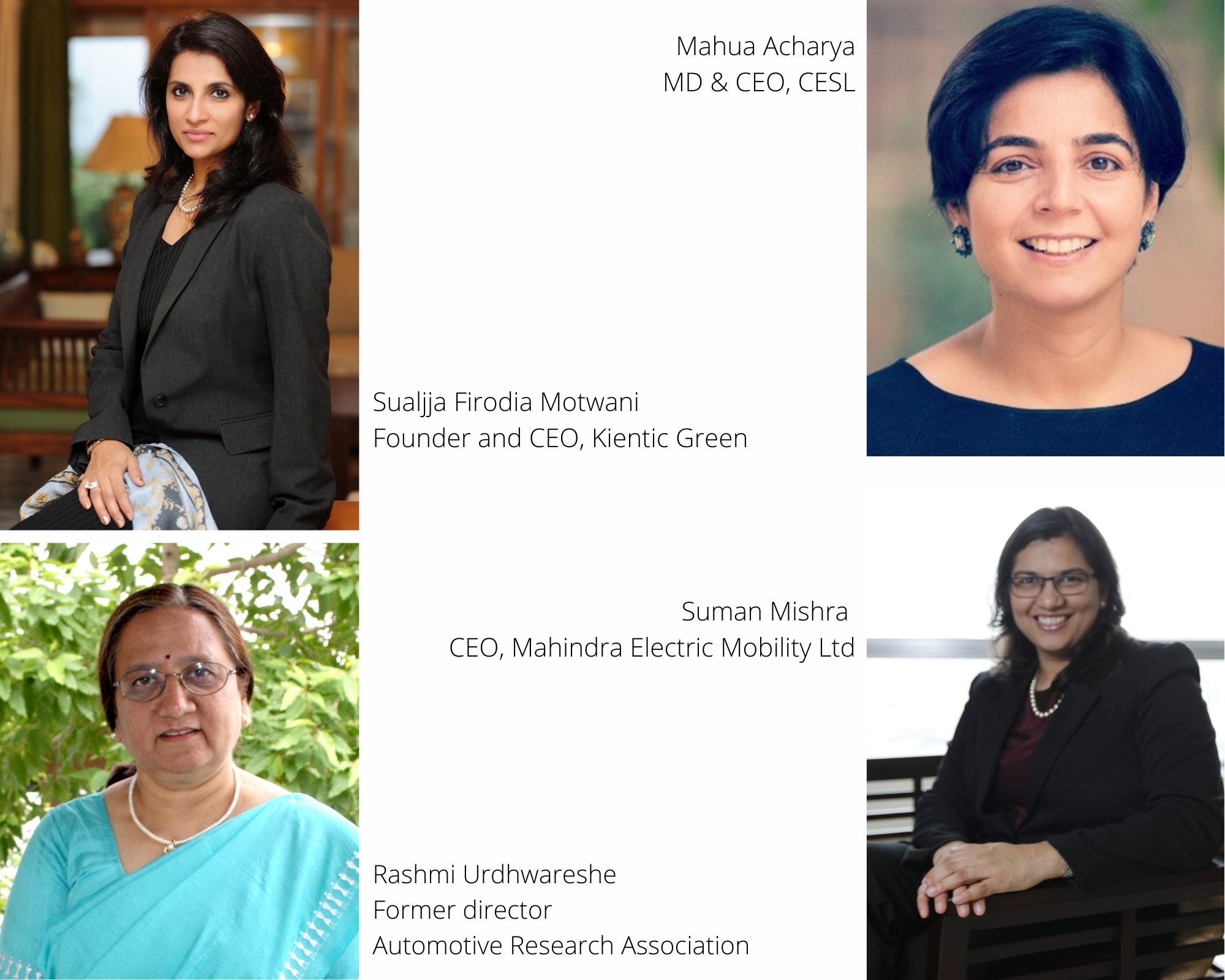
Mumbai: As India’s electric vehicle industry gains momentum, it has set the ball rolling for women in leadership roles. This is across EV companies in the private, public and startup domains, say experts.
Leading the charge is Sulajja Firodia Motwani, CEO of Kinetic Green whose company specialises in electric three-wheelers. A relatively newer yet dynamic addition has been state-run Convergence Energy Solutions’ CEO, Mahua Acharya, who is starting to be credited with leading a mini revolution for electric transportation across states. Rashmi Urdhwareshe, a former director of the Automotive Research Association, is working with several government bodies in EV-related policies. Mahindra Electric also has a new female CEO in Suman Mishra.
The EV startup ecosystem is also seeing women playing a significant role in not just vehicle design but also in energy management & storage, charging infrastructure, user interface applications and many more emerging areas. They include Esmito founder Prabhjot Kaur and Evolet founder Prerana Chaturvedi.

An industry which is more electrical and electronics, and less mechanical, in nature naturally draws women into such roles. “E-mobility is a new disruptive and vibrant field with abundant scope for building new technology and development of the ecosystem,” said Motwani, one of the early entrants into the EV space in India.
Increasing digitalisation and newer futuristic electric vehicle technologies like embedded programming and systems engineering make it easier for women to dive into this space, said Kaur, whose startup is offering e-mobility solutions like batteries and chargers with charging and swapping management.
Legacy wise, there were fewer women in the conventional engine technology (where fossil fuels are used) space. “I see a natural push and a creative tendency for more women to get in the EV ecosystem,” said Kaur.
“While this industry needs new skillsets, clearly there is no need to reinvent the wheel. Collaboration is the way to go. We often brainstorm among the women leaders in this space, trying to build an EV ecosystem in partnership,” said Motwani.
India needs to play catch up in the electric vehicle game, Kaur said. “We are almost a decade behind in EV technology compared to other global players.”
Women bring in a good form and type of leadership, good camaraderie and an inclusive approach to doing business, said Acharya of Convergence Energy. This is a new technology, and women are a lot more confident about indicating what works and what does not, and show great willingness to listen and learn, she added.
The industry is responding well, but has a lot more to do to meet demand and secure a seamless supply chain, Acharya said.
Women have this inborn protection instinct to worry more, helping towards making the EVs a safer mode of transport, said Kaur.
It is easier for women to be a significant part of the EV ecosystem as women can seamlessly play a big role in data analysis, simulation, validation, mobility solutions and disruptive technology processes of this industry, said Urdhwareshe, the former Automotive Research Association director. Women can give a significant boost to the overall engineering redesign elements too, as they are stronger in control systems, power electronics and have a drawing board expertise, she added.
Women’s progress in the sector can only bring innovation and new perspective to the business. With EVs becoming a cleaner and greener mode of transport, female leaders are leading that charge, for the swift transition to EVs.
Already it is expanding, pointing perhaps to the biggest change in mobility. In fact, in the first half of the ongoing fiscal 2022, EV sales have more than tripled to 118,000 units while a severe shortage of semiconductors has squeezed the sales growth of passenger vehicles running on fossil fuels.
Also read:
